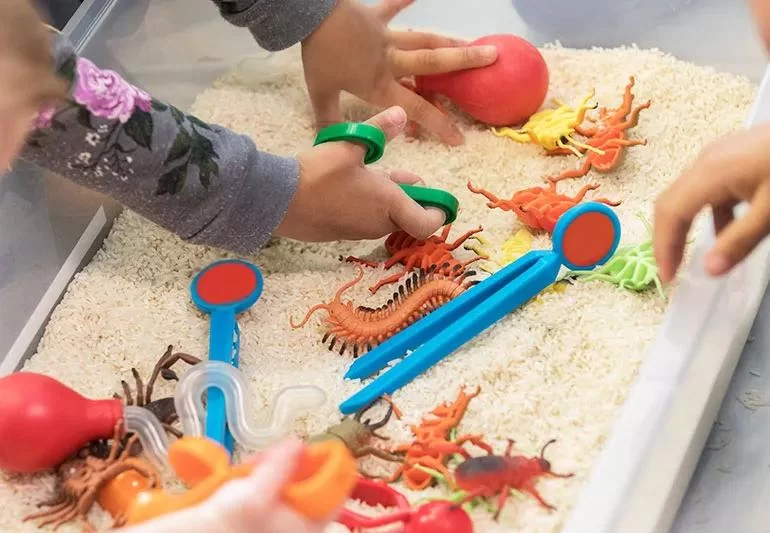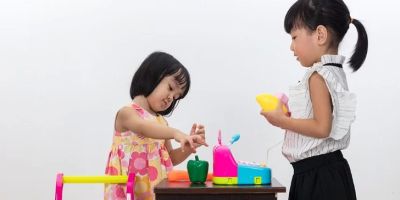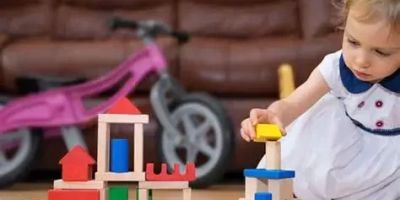
How to Make Sensory Play Fun and Educational for Kids
As a parent, educator, or caregiver, you've likely heard about the importance of sensory play in a child's development. But how can we make sensory play both fun and educational? Sensory play activities aren't just a way to keep kids entertained; they provide a range of developmental benefits that can shape their learning and growth. In this article, I’m going to share how to make sensory play engaging, fun, and full of educational value for your little ones.
1. Understanding the Power of Sensory Play
Before diving into the fun activities, it’s important to understand why sensory play is so essential. Sensory play is any activity that stimulates a child’s senses—sight, smell, touch, hearing, and taste. But it’s not just about making a mess or creating a fun atmosphere; sensory play encourages critical developmental skills in kids.
From building fine motor skills through tactile exploration to enhancing cognitive development and problem-solving abilities, sensory play helps children learn in a hands-on, interactive environment. These activities also support emotional regulation by providing an outlet for self-expression and calming anxiety. With this in mind, I aim to share some ideas that bring both fun and learning into the sensory play experience.
2. Fun and Educational Sensory Play Ideas
There’s no shortage of creative ideas when it comes to sensory play. Here are some of my top picks for sensory play activities that are both educational and fun:
2.1 Color Mixing with Water
This simple activity involves using colored water to let kids explore the concept of mixing colors. Fill small containers with different colored water (red, blue, and yellow), and give the kids some clear cups or bowls. Encourage them to mix the colors to create new shades and observe the transformations. Not only does this teach color recognition, but it also helps develop fine motor skills as they pour the liquids.
2.2 Sensory Bins for Exploration
Sensory bins are an excellent way to allow kids to explore different textures and materials while learning about the world around them. You can fill a large container with rice, pasta, sand, or even water beads and include small toys, animals, or shapes. This encourages imagination and fine motor skills as they sift through the materials. Additionally, you can incorporate educational elements like counting, sorting, or matching activities within the bin.
2.3 Nature Walk and Sensory Scavenger Hunt
Take sensory play outdoors and embark on a nature walk. During the walk, ask the children to collect different items like leaves, rocks, flowers, or sticks. Then, let them explore these objects using their senses. How does a leaf feel? What sounds do the rocks make when tapped together? This activity encourages environmental awareness, creativity, and vocabulary building.
2.4 Sensory Play with Playdough
Playdough is a versatile material that offers a wealth of educational opportunities. Kids can squish, roll, and mold playdough to create different shapes, textures, and objects. As they explore the tactile properties of the dough, they also develop hand-eye coordination and strengthen their fine motor skills. You can take this a step further by incorporating numbers, letters, or shapes into the play to promote early literacy and numeracy skills.
3. The Educational Benefits of Sensory Play
Sensory play isn’t just about fun—it’s about creating learning opportunities that engage a child’s mind and body. Through sensory play, kids gain important skills that will serve them throughout their lives. Here are some of the educational benefits sensory play provides:
3.1 Cognitive Development
As children engage with various sensory materials, they learn how to problem-solve, make decisions, and think critically. For example, exploring different textures allows kids to develop an understanding of contrasts (soft versus rough), and playing with shapes and colors helps them develop spatial awareness. These activities also promote memory and concentration as they focus on the task at hand.
3.2 Language Development
When children describe what they see, feel, smell, or hear during sensory play, they are building their vocabulary. Sensory activities give them the chance to practice new words and express their thoughts in new ways. This can boost communication skills and help develop both receptive and expressive language abilities.
3.3 Emotional Regulation
Sensory play provides a therapeutic environment where children can release pent-up emotions and calm down when feeling overwhelmed. Activities like playing with sand, water, or soft materials can be incredibly soothing and help children regulate their emotions. As a parent, I’ve noticed that when kids are given opportunities to engage in calming sensory play, they often seem more at ease and ready to tackle other challenges throughout the day.
4. Making Sensory Play Last Longer
One of the challenges I’ve faced with sensory play is making it a long-lasting experience. While kids can get excited about a sensory activity, it’s important to keep their interest engaged over time. Here are a few strategies that have worked for me:
4.1 Rotation of Sensory Materials
Instead of overwhelming kids with too many materials at once, I’ve found that rotating sensory bins or activities is an effective way to keep them engaged. Changing up the materials every few days ensures that the activity feels fresh and exciting each time. It also allows kids to explore new textures and concepts.
4.2 Encourage Independent Play
While it’s great to guide children during sensory play, I also encourage independent exploration. The more kids are allowed to play on their own, the more they discover. They may come up with creative ways to engage with the sensory materials that you might not have thought of. Let them lead the way, and they’ll be more likely to stay engaged.
4.3 Combine Sensory Play with Other Learning Activities
To make sensory play even more educational, I often combine it with other learning activities. For instance, you can incorporate math by counting the objects in a sensory bin or practice letters and numbers by using playdough stamps. Sensory play becomes a more meaningful experience when it aligns with your child’s current learning objectives.
By embracing these ideas, you’ll not only create a fun and stimulating environment for sensory play, but you’ll also help your child grow in a wide variety of areas—both intellectually and emotionally. Sensory play is one of the best tools we have to support a child’s development, and with just a little creativity, you can turn any moment into an enriching learning experience.





